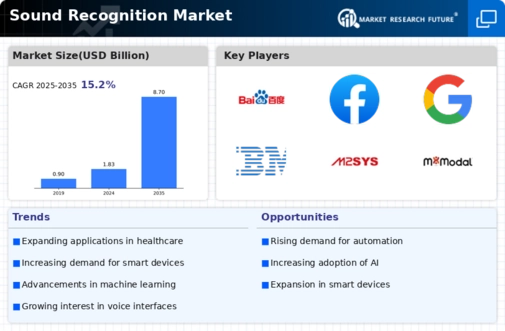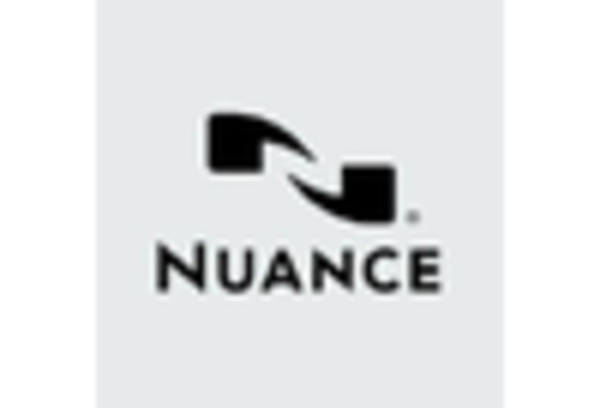Market Trends
Key Emerging Trends in the Sound Recognition Market
The Sound Recognition Market is witnessing a multitude of trends that reflect the evolving landscape of audio-based technologies. One prominent trend is the increasing integration of sound recognition in smart home devices. Voice-activated assistants, smart speakers, and other connected devices are becoming ubiquitous, catering to the growing demand for seamless and intuitive interactions within the smart home ecosystem. This trend underscores the market's focus on enhancing user convenience and expanding the scope of sound recognition applications.
Another notable trend is the incorporation of sound recognition in automotive systems. With the rise of connected and autonomous vehicles, sound recognition plays a crucial role in enhancing in-car infotainment systems, voice commands, and driver assistance features. The automotive industry's emphasis on creating a more immersive and hands-free driving experience contributes to the adoption of sound recognition technology, marking a significant trend in the market.
Advancements in artificial intelligence (AI) and machine learning (ML) are driving key trends in the Sound Recognition Market. The continuous improvement of algorithms enables sound recognition systems to accurately identify and respond to diverse sound patterns. This trend results in more sophisticated and context-aware applications, expanding the capabilities of sound recognition across various industries, from healthcare to security.
Security and surveillance applications are experiencing a growing trend in the integration of sound recognition technology. Organizations and businesses are leveraging sound analytics for threat detection, intruder identification, and overall security enhancement. This trend reflects a broader shift towards proactive and intelligent security solutions, where sound recognition plays a pivotal role in complementing traditional surveillance methods.
The democratization of sound recognition technology is another prevalent trend in the market. As the technology becomes more accessible, developers and innovators are incorporating sound recognition capabilities into a wide range of applications. Open-source platforms, software development kits (SDKs), and APIs are contributing to this trend, fostering a collaborative ecosystem where developers can explore and implement sound recognition in diverse projects.
Interconnected devices and the Internet of Things (IoT) are driving trends in the Sound Recognition Market. The seamless integration of sound recognition across various IoT devices, such as wearables, smart home appliances, and industrial equipment, is creating a more interconnected and intelligent environment. This trend signifies the market's responsiveness to the increasing demand for cohesive and interoperable solutions in the IoT era.
Privacy considerations and ethical use of sound recognition technology are emerging as significant trends in the market. With the proliferation of voice-activated devices and concerns about data security, companies are prioritizing privacy features in their sound recognition solutions. User consent, data encryption, and transparent data handling practices are becoming integral components of sound recognition systems, aligning with the growing emphasis on responsible technology use.
The market is also witnessing a trend towards customization and personalization of sound recognition applications. Companies are developing solutions that allow users to tailor their sound recognition experience based on individual preferences. Whether it's custom wake words, personalized voice commands, or adaptive learning features, this trend reflects a desire to offer more tailored and user-centric sound recognition experiences.
Lastly, the Sound Recognition Market is experiencing a trend of continuous innovation and competition among key players. Companies are investing heavily in research and development to stay ahead of the curve, introducing novel features and improvements to distinguish their products in the market. Strategic partnerships, collaborations, and acquisitions are prevalent as companies seek to strengthen their market position and expand their technological capabilities.
















Leave a Comment